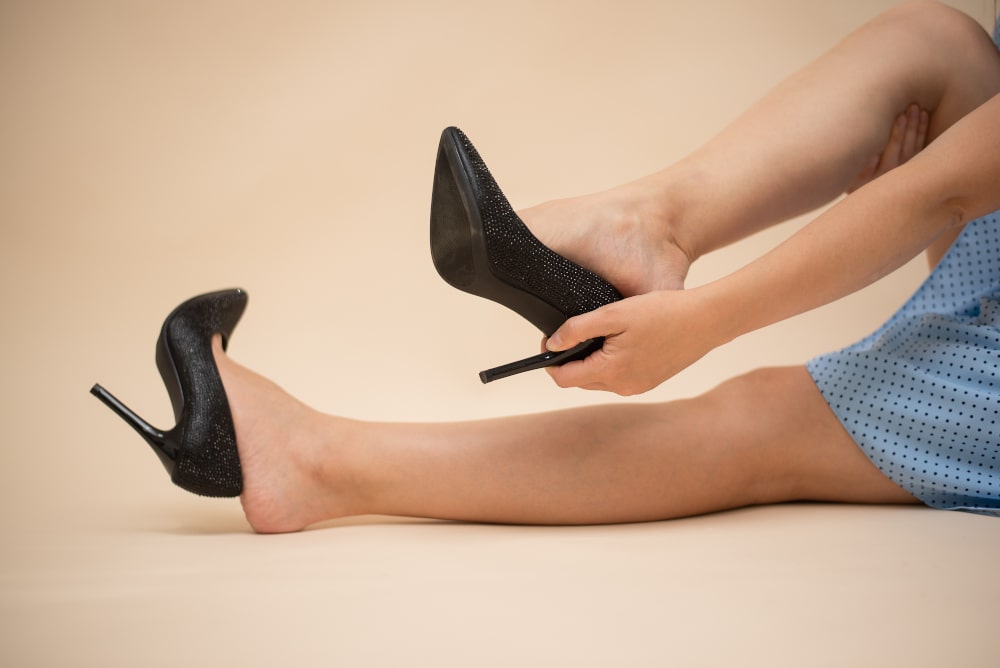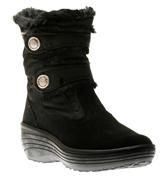Shoes aren’t just about style – they’re important for keeping our feet healthy and happy. However, did you know that wearing the wrong shoes can cause big problems for your feet?
Let’s dive into what can happen and how you can find the right shoes.
Signs You’re Wearing the Wrong Shoes
- Pain and Discomfort: If your feet hurt when you walk or stand, your shoes might be to blame. Pain from an ill-fitting pair of shoes could feel sharp or dull, and it might hurt in your heels, arches, toes, or ankles.
- Blisters and Calluses: Tight shoes, or ones that rub against your feet, can give you blisters or calluses. These aren’t just uncomfortable – they can get infected if you don’t take care of them.
- Tired Feet: Shoes without good support or cushioning can make your feet feel tired, especially if you’re on them a lot. Your feet might ache, your ankles might swell, and you might just feel worn out.
- Uneven Wear on Your Shoes: Check out the bottoms of your shoes. If they’re wearing out unevenly – for example, more on one side than the other – it could mean they’re not supporting your feet properly, which can affect how you walk.
- Balance Trouble: Shoes that don’t fit right can disturb your balance and make it hard to walk or do activities safely.
Conditions Incorrect Shoes Can Cause
- Plantar Fasciitis: If your shoes don’t support your arches or give enough cushioning, you might get plantar fasciitis – this occurs when the bottom of your foot gets inflamed and hurts.
- Pesky Bunions: Shoes that squish your toes, especially in a narrow space, can make bunions worse, or even create them. These bony bumps grow at the base of your big toe, and can cause a significant amount of pain.
- Ingrown Toenails: Tight shoes, or ones that don’t let your toes wiggle, can lead to ingrown toenails – toenails that grow into your skin and cause pain.
- Achilles Tendonitis: Shoes without good heel support or with high heels can strain your Achilles tendon, making it hurt and swell up.
- Ball-of-Foot Blues (Metatarsalgia): If your shoes don’t have enough cushioning or support, you might get pain and swelling in the ball of your foot.
How to Find the Right Shoes
- Get a Good Fit: Start by making sure your shoes fit right. Measure your feet in-store to make sure you find the perfect size.
- Know Your Feet: Everyone’s feet are different, so think about what kind of feet you have – high arches, flat feet, or somewhere in between. Then, find shoes made to support your type of feet.
- Pick Quality Shoes: Look for shoes made from quality materials that are built to last. Check for cushioned insoles, support for your arches, and tough soles that can handle lots of walking.
- Test Them Out: Once you find a pair you like, give them a test run. Walk around the store and see how they feel – they should be comfy and supportive.
- Replace Them When Needed: Even the best shoes wear out eventually, so keep an eye on them. Plan to get new ones every 300-500 miles or every 6-12 months if you wear them a lot.
All in all, wearing the wrong shoes can have a big impact on your foot health and overall well-being. From pain and discomfort to serious foot conditions, the consequences of ill-fitting footwear should not be ignored.
By paying attention to signs you’re wearing the wrong shoes, taking the time to find the right ones, and being aware of the potential conditions the wrong shoes can cause, you can help protect your feet and maintain their health for years to come.
For comfortable and supportive footwear that prioritizes both style and functionality, consider Walking on a Cloud. With a wide range of options designed to meet your individual needs, we can help you find the perfect pair of shoes for any occasion.
Visit Walking on a Cloud today to explore our selection of comfortable and supportive footwear. Your feet will thank you!











